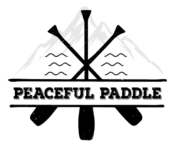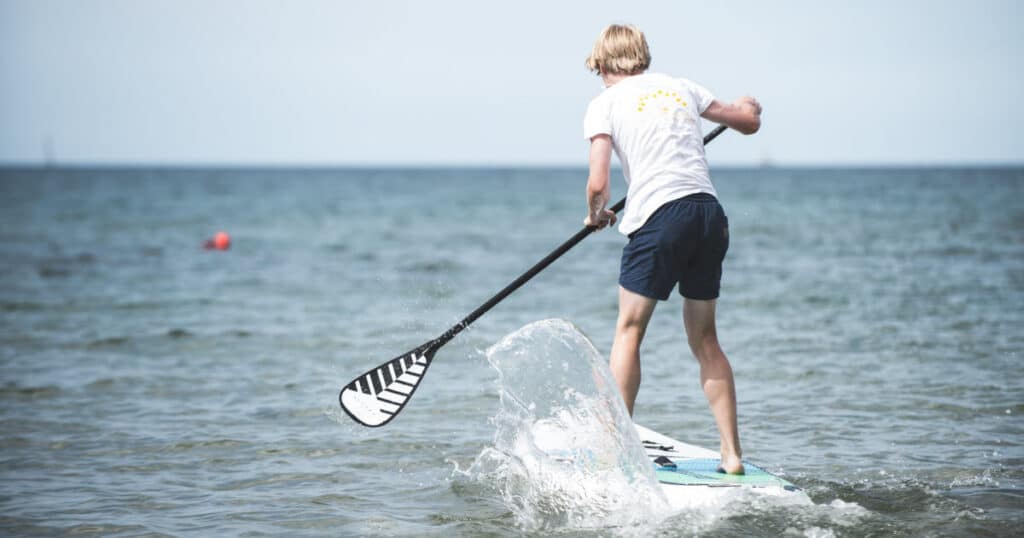If you’re wondering if paddle boarding is hard, generally the answer is no: paddle boarding is not that difficult. It’s an activity that is quite easy to learn and you’d be surprised at how quickly you can learn to paddle board at a decent skill level. It only takes a few hours of correct instruction for you to learn how to paddle board, no matter what your age, size, or fitness level. In this article I’ll answer the question that brought you here: Is Paddle Boarding Hard? And I’ll give you some tips that will save you time, and make it easier to learn to paddle board.
Why I Love & Recommend Paddle Boarding
Using a stand up paddle board is a fun way to spend an afternoon on the water.
It’s an activity that doesn’t require a lot of equipment or preparation (you can grab your board and go). It’s also and excellent form of exercise for the whole body, and allows you to navigate into shallow water, coves, and places that you may not be able to get to with a boat.
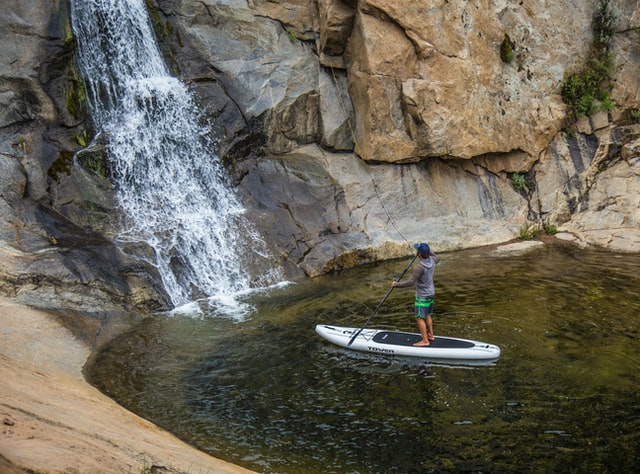
There are a number of benefits that you’ll enjoy while paddle boarding, and I’ll get to those in a moment. First let’s go over some of the things you need to know to get started on a stand up paddle board.
Paddle Boarding 101
There are certain steps that you need to follow in order to use a stand up paddle board. Keep these tips in mind:
Getting Started
- You must use a paddle board that is made for beginners. These boards provide the most stability and you will find them much easier to learn on than other types of paddle boards.
- Start your paddle boarding adventures on calm and flat water. This could be a body of water such as a lake, during the morning or evening hours when there is little wind. Stay away from the ocean when you’re a beginner. The water tends to be too choppy and can make paddle boarding hard.
- Don’t be discouraged if you have trouble standing up at first. This will probably take several tries. You just have to get the knack of it. Stay calm and enjoy your surroundings and being on the water. That’s why you’re paddle boarding!
- Ensure that you are using an appropriately sized paddle, and holding your SUP paddle the right way. There are certain rules to remember in making sure that a paddle is the right size for kayaking, and the same is true when you canoe or paddle board. I’ll discuss this in more detail in a moment.
- Remember to ensure that your fins aren’t encumbered by any debris or sand in shallow water when you get in the water with your SUP. Start in shallow water, but make sure it’s deep enough that you won’t become stuck when you get on.
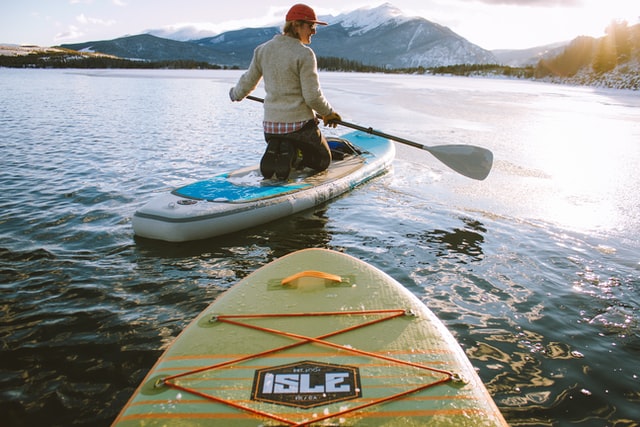
Standing Up
- Kneel on your SUP with one knee when you push off to launch your paddle board.
- Before you stand up, make sure that you are comfortable on your knees. Once you feel a strong sense of balance while kneeling, you can then try to stand up.
- Make sure that your paddle is placed perpendicular across your SUP so that your board and paddle form a plus sign (+).
- To ensure stability, put your hands on your board.
- Moving your feet one at a time, position them about a shoulder-width distance apart from one another on the middle part of your SUP. A useful point of reference is around the area of the center grab handle. This will help provide you with excellent balance and will let you use your paddle efficiently.
- If you have trouble standing up, keep practicing! Be patient with yourself and don’t give up.
Focus on Posture
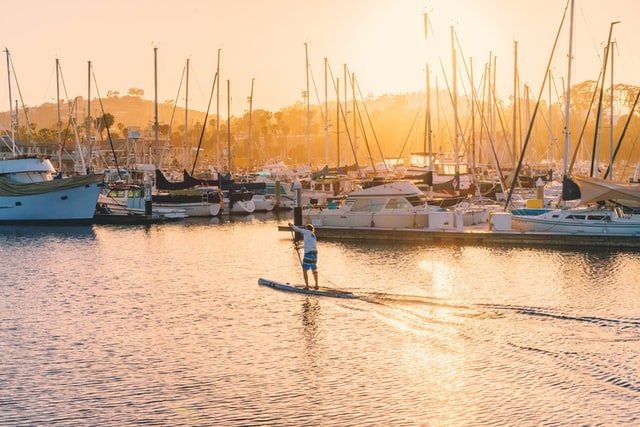
- Remember that paddle boarding is a bit like riding a bike in that practice and momentum are key.
- Be meticulous about your stance and posture. These elements are key to ensuring that you make efficient strokes and that your paddling technique will improve.
- Your position on the SUP should never be too far forward.
- Avoid looking down as you paddle. Glancing downward can compromise your balance and potentially make you fall off.
- If you’re having trouble balancing properly as you paddle, keep your focus on something located on land or in the water. As you focus, start paddling in the direction of whatever point of interest you’ve chosen. This will help you glide more smoothly.
- Keep your knees unlocked as you stand upright. Have the logo of the SUP’s paddle blade facing away from you and make sure the blade is completely in the water.
- When you want to turn the paddle board, you will need to put your paddle blade completely in the water and then push backwards. This is the movement necessary to rotate your SUP. Ensure that your feet are positioned firmly and comfortably before you do this.
Paddle Boarding: A Great Workout That’s Not Too Hard
Paddle boarding will give you a fantastic full-body workout.
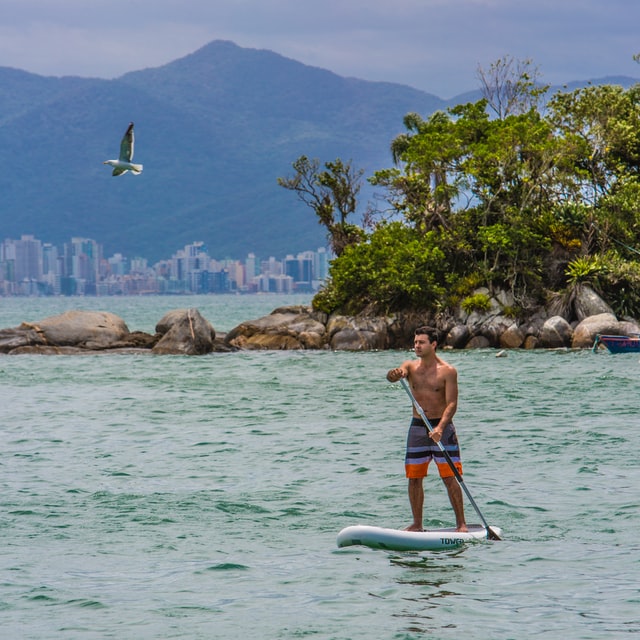
The calorie-burning properties of a few hours on a paddle board are almost unmatched. In fact, you will burn more calories with one hour of paddle boarding than you would with an hour of almost any other sport because it brings together every element of full-body exercise. This includes
- strength,
- core,
- balance, and
- endurance.
You’ll work your entire body with whatever kind of paddle boarding you do, whether it is recreational paddling, SUP racing, SUP surfing, SUP yoga, or SUP touring.
People at all fitness levels can have fun and get some exercise on a paddle board. Even if you’re a beginner, you can enjoy and benefit from this sport.
One of the reasons why paddle boarding is such an effective workout is the fact that it consistently requires the use of your legs, core, and back muscles. At the same time, your shoulders, back, and arms are always engaged as you move your paddle through the water.
The pattern of movements you must continue while on the water will give you a highly effective full-body workout.
To boost your workout even further, keep up a faster pace and stay on your board for a longer duration of time.
It’s a Great Workout, but Is Paddle Boarding Hard?
Any good workout is challenging, but the nice thing about paddle boarding is that you can set your own pace. Shift positions to sit or kneel to take breaks when you need to, and the cool breeze across the water will keep you cool.
Paddle Boarding Has Many Other Benefits Too
Not only could you get in the best shape of your life if you use a paddle board with regularity, but you will also reap the following benefits while paddle boarding:
- Relieve Stress – Restore yourself with a relaxing day on the water, and the endorphins help boost mood and relieve stress.
- Enjoy Nature – There’s nothing like being in, on, and near the water.
- Improve Your Balance – Using a paddle board with dramatically improve your overall balance.
- Boost Your Confidence – And use this confidence to branch into other water sports or activities.
- Build Stamina – Paddle boarding will boost your endurance level and cardiovascular health.
- Improve Relationships – Paddle boarding is a wonderful way to spend time with other people who enjoy the sport or want to learn it
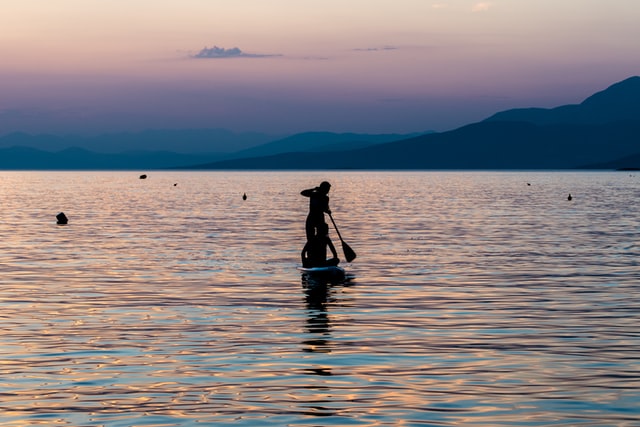
Is Paddle Boarding Hard to Learn?
Not really – just have patience
Now that you’ve learned about paddle boarding, are you excited to try it?
If so, look into finding some lessons and find out if any of your family and friends want to come with you. It might make sense to rent a paddle board before you invest in one to make sure that you enjoy this activity. Or if you already know someone who paddle boards, ask them if you can borrow their board or join them on their next excursion.
Before you go paddle boarding, you must make sure that you’re a competent swimmer and that you feel comfortable in the water. Once that’s in the bag, you’re all set to get started!
